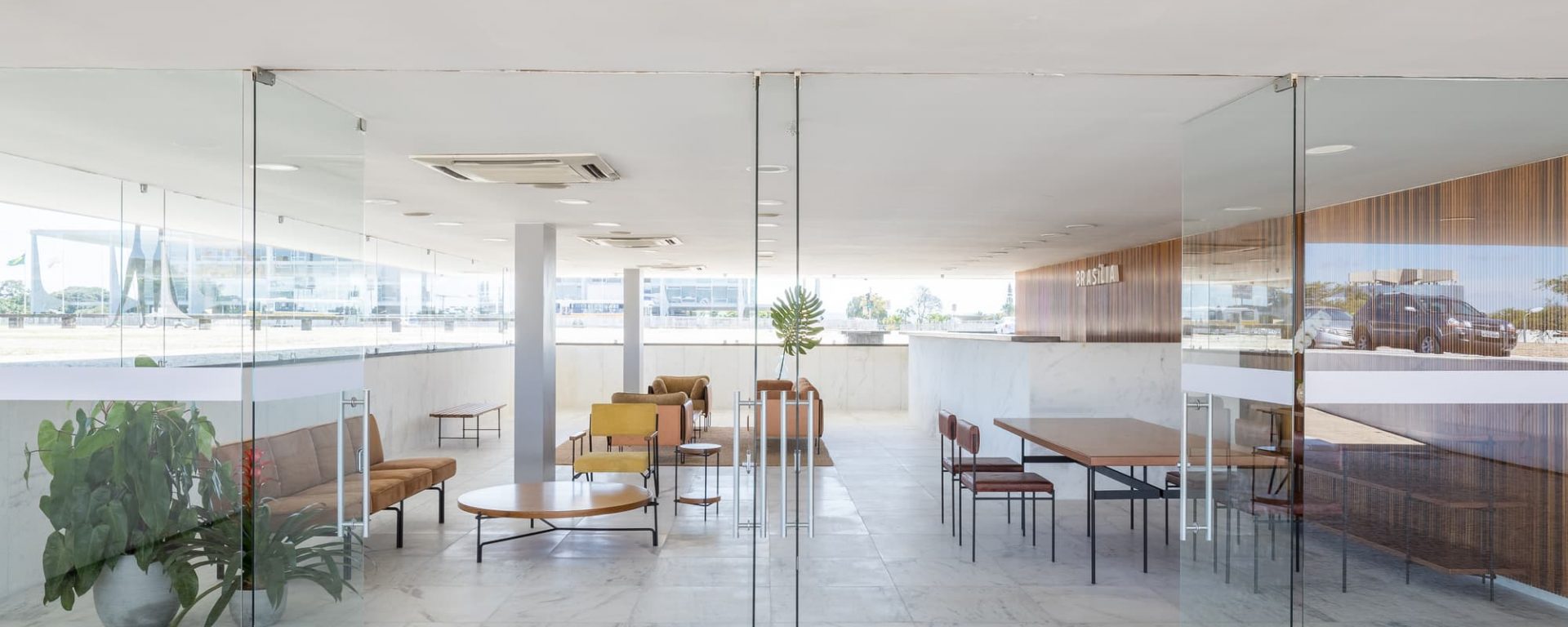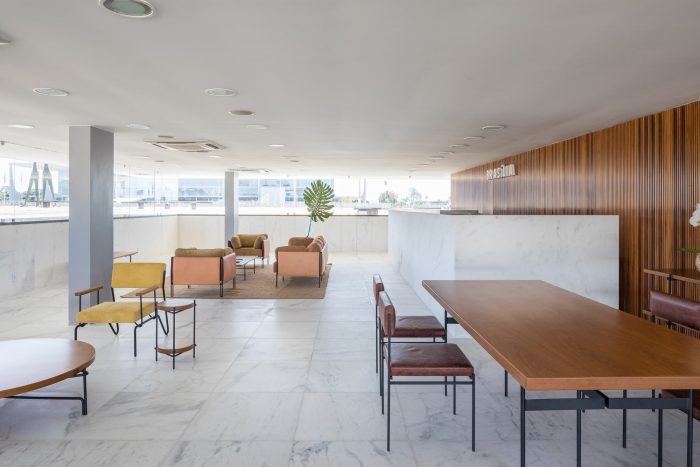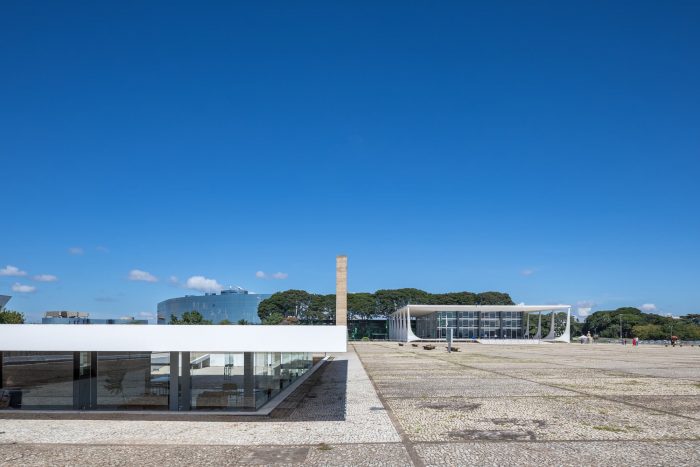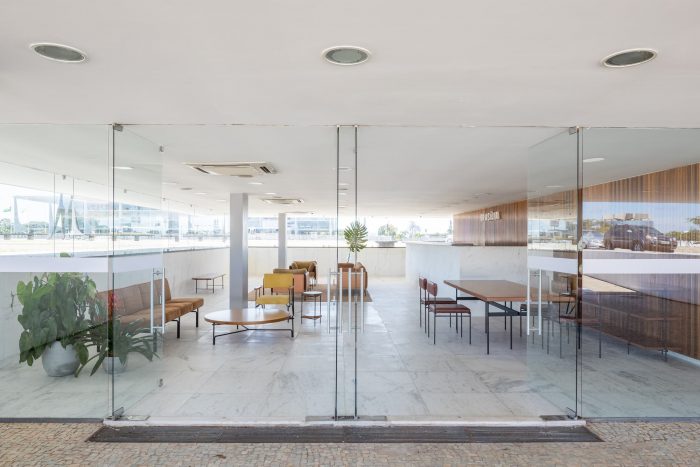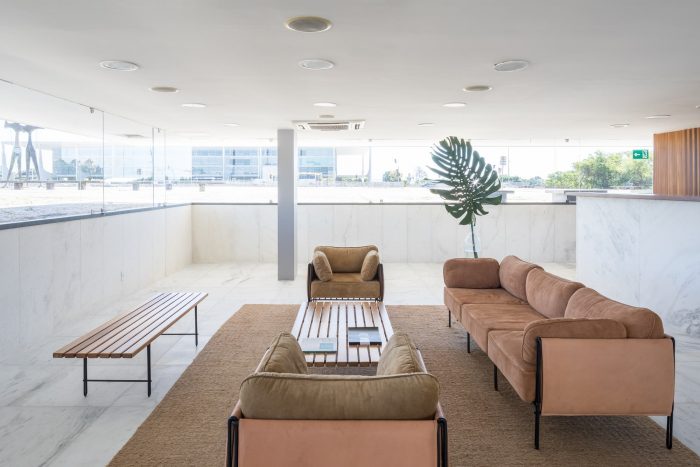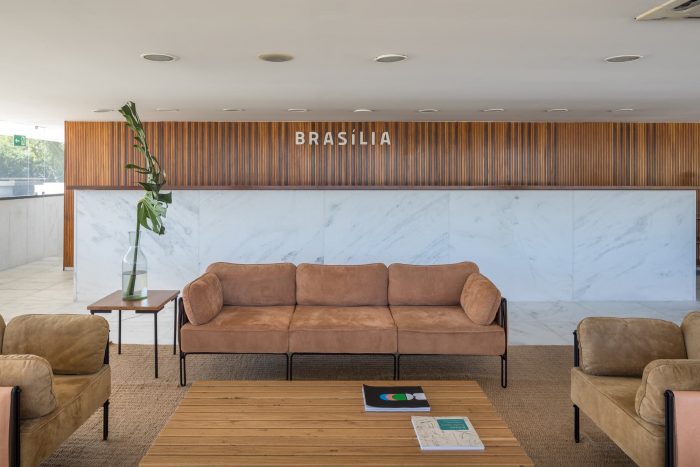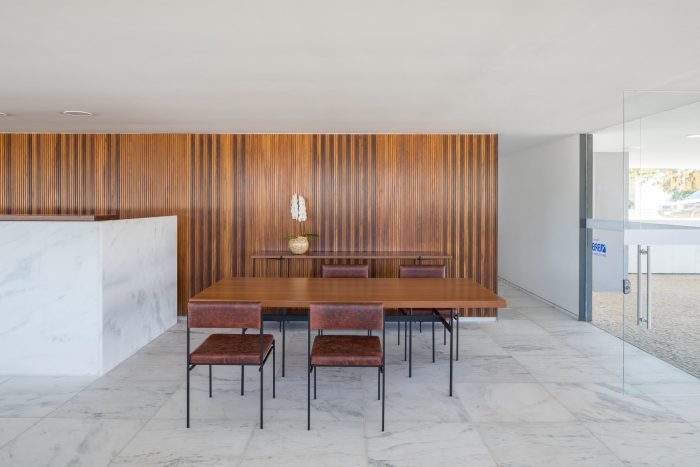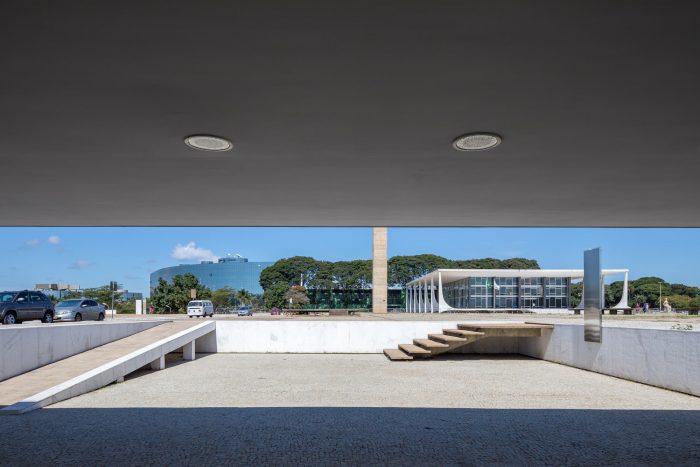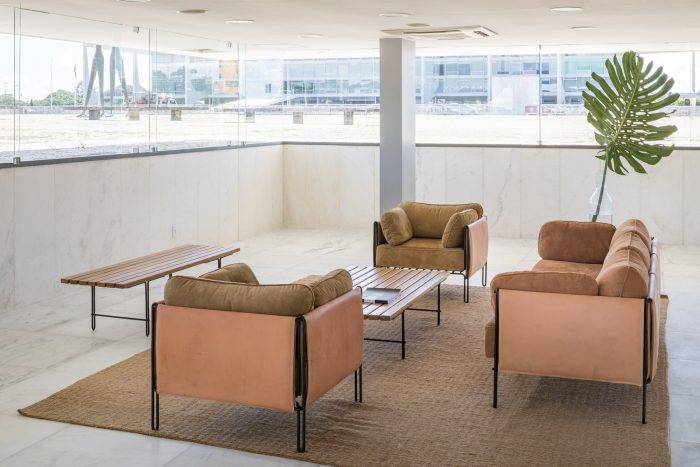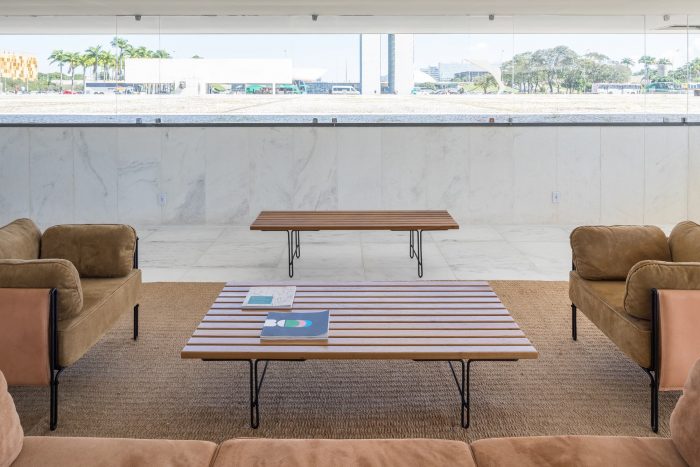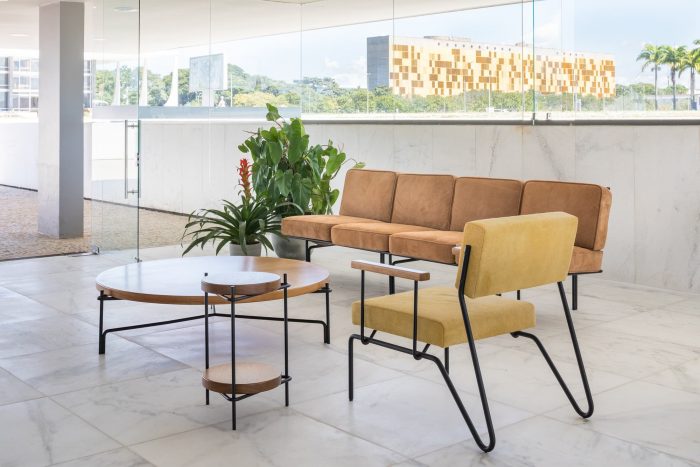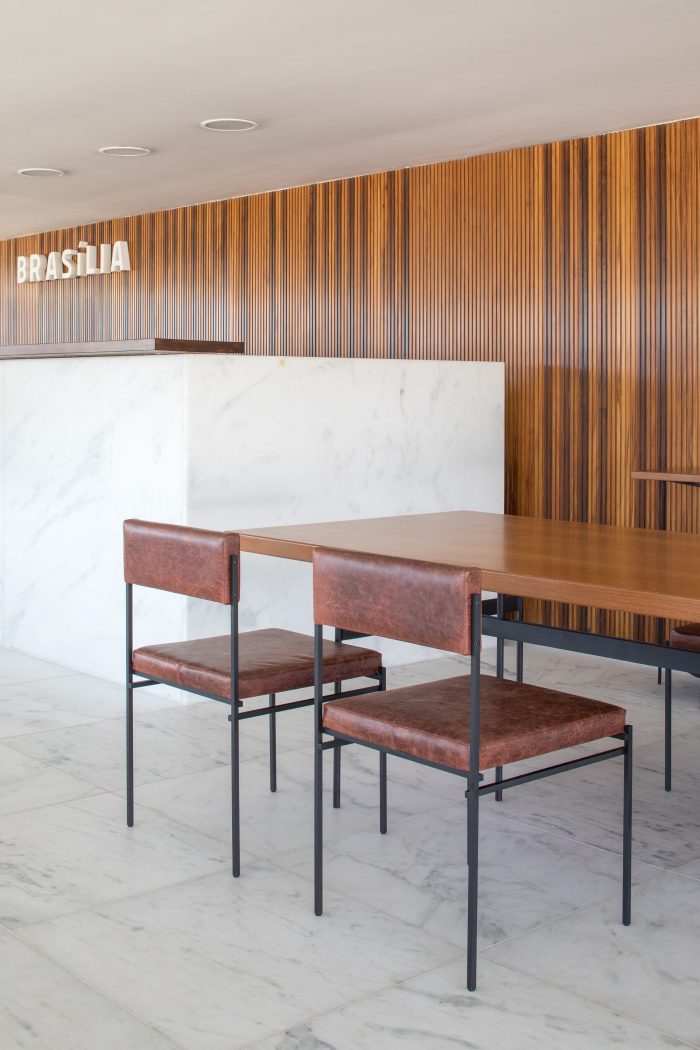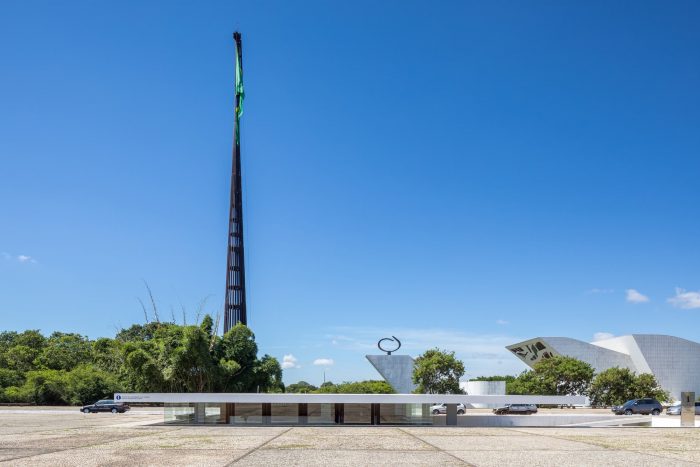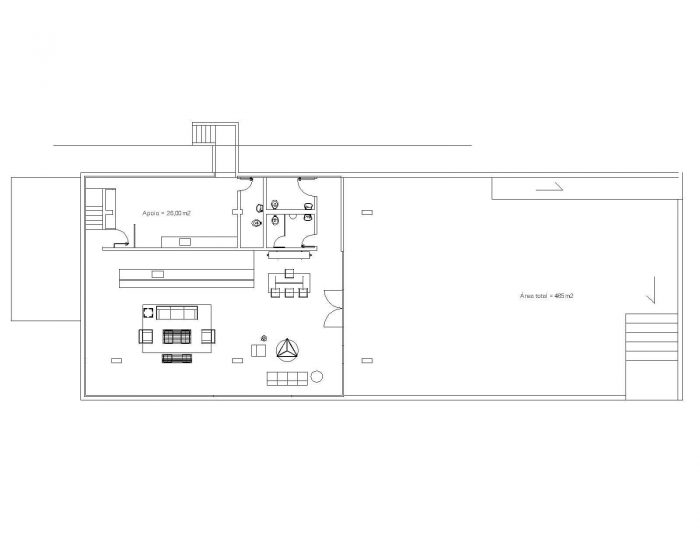原本以为是一个聚会和休息的地方,由奥斯卡-尼迈耶设计的位于Praça dos tres poderes广场的茶馆是70年代和80年代巴西利亚最繁忙的地方之一。在巴西利亚的Planalto宫附近有250平方米的半埋式建筑,是首都的一个节日场景。政治干预和缺乏租户是会议结束和随之而来的废弃的原因。1994年,该空间成为旅游援助中心(CAT),开放了6年,但由于屋顶坍塌的风险而关闭。
Originally thought to be a place of meeting and rest, the Tea House designed by Oscar Niemeyer at Praça dos tres poderes Square was one of the busiest points in Brasilia in the ’70s and ’80s. The semi-buried construction with 250 m2 near the Planalto Palace in Brasilia, was a scene of festivities in the capital. Political interference and lack of tenant were responsible for the end of the meetings and for the consequent abandonment. In 1994, the space became a Tourist Assistance Center (CAT), which was open for six years but closed because of the risk of the roof collapsing.
它被关闭了10年,在2010年经过结构改革后再次作为CAT重新开放。这座房子目前为每天在三国广场上流通的游客和参观者提供服务。旅游秘书处和联合国教科文组织最近邀请BLOCO建筑师团队做CAT的策展人,他们选择了建筑师Samuel Lamas来签署该空间的家具。目标是恢复奥斯卡-尼迈耶的项目,尊重过去,用当代作品来布置空间,与首都的美学和现代主义精神相联系。
It was closed for 10 years and reopened in 2010 again as CAT after a structural reform. The house currently caters to visitors and tourists who circulate every day through the Three Powers Square. The Secretariat of Tourism and Unesco recently invited the BLOCO team of architects to do the curatorship of CAT who chose the architect Samuel Lamas to sign the furniture of the space. The goal was to restore Oscar Niemeyer’s project, honoring the past, and furnishing space with contemporary pieces that connect with the capital’s aesthetic and modernist spirit.
地板和墙壁的白色大理石被重新激活,窗框被清洗,天花板和柱子被重新刷上一层带有原始设计色彩的油漆。氛围包括一个中央座位,以便游客可以享受空间和古迹,有一套沙发和扶手椅 “Sonia”,咖啡桌和长凳 “Ruy “以及边桌Caroline。接待处收到了一张Deia沙发,一张Sandra扶手椅,一张Jamile咖啡桌和一张 “Janice “边桌。为向游客展示城市的地图和书籍而保留的空间获得了卡罗琳桌子、”João “椅子和 “Carlos架子”。
The white marble of the floor and walls was revitalized, the window frames cleaned, ceiling and pillars received a new layer of paint with the colors of the original design. The ambiance includes a central seating so that the visitor can enjoy the space and monuments with a set of sofas and armchair “Sonia”, coffee table and bench “Ruy” and side table Caroline. The Reception received a Deia couch, a Sandra armchair, a Jamile coffee table, and a “Janice” side table. A space reserved to present the city to tourists with maps and books gained a Caroline table, “João” chairs and “Carlos shelf “.
带着简单和建筑学的推理,这些带有典型的巴西名字的家具,有精致的金属轮廓,在不影响功能的情况下达到了最大的亮度。产品中探索了几何学和纯形式的使用:铁条看起来就像空间中松散的柱子,被其他型材捆绑在一起。表面是木头的,挂毯是大地色系的天然皮革。
With simplicity and architectural reasoning, the furniture that bears names typically Brazilian, have delicate metallic profiles that reach the maximum lightness without compromising the functionality. The use of geometry and pure forms are explored in the products: iron bars appear as if they were loose columns in space and tied together by other profiles. The surfaces are of wood and the tapestry in natural leather in earthy tones.
Architects: Bloco Arquitetos, Equipe Lamas
Area : 250 m²
Year : 2019
Photographs :Haruo Mikami
Manufacturers : Gallery tapetes, MAIS VIDROS
Clients : Secretaria de Turismo do DF and Unesco
Equipe Lamas Lead Architect : Samuel Lamas
Bloco Arquitetos Lead Architects : Daniel Mangabeira, Henrique Coutinho and Matheus Seco
City : Praça dos Três Poderes
Country : Brazil

